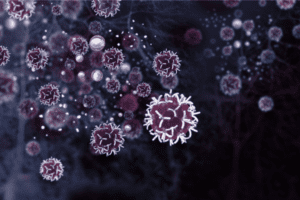Pancreatic Cancer
What is pancreatic cancer?
Pancreatic cancer occurs in the pancreas, an organ that lies behind the lower part of the stomach. The pancreas releases enzymes that help you digest food, as well as hormones that help to manage your blood sugar.
The type of pancreatic cancer is dependent on where it develops in the pancreas. The main types include:
- Exocrine pancreatic cancer (e.g. Pancreatic adenocarcinoma): This is the most common type, and occurs when cancer starts in the cells that line the ducts of the pancreas.
- Pancreatic neuroendocrine tumors/Islet cell tumors: This rare type occurs when the cancer forms in the hormone-producing cells (neuroendocrine cells) of the pancreas.
Pancreatic cancer is difficult to detect early. It is usually diagnosed at later stages because patients often don’t show symptoms in early stages. If you have a family history of pancreatic cancer, genetic counseling may be helpful.
Some factors increase the risk of having the disease, including smoking, obesity, and family history. Pancreatic cancer usually develops later in life; almost all patients are older than 45 years old. Some research also indicates that men are slightly more likely to develop pancreatic cancer than women, but this may be because men smoke tobacco more than women.
What are the symptoms of pancreatic cancer?
Symptoms often do not occur until the cancer has advanced. They include, but are not limited to:
- Diabetes
- Unintended weight loss
- Pain in the upper abdomen that can spread to the back
- Jaundice (yellowing of the skin and eyes)
- Loss of appetite
- Fatigue
- Blood clots
- Dark urine
- Depression
- Bowel obstruction
What causes pancreatic cancer?
Normal, healthy cells grow at a steady rate, and die at a set time. However, sometimes healthy cells develop abnormalities; they grow and multiply at an out of control rate, and take much longer to die. When this happens to cells in the pancreas, they accumulate into a tumor there. However, the exact cause of the cell mutation that leads to pancreatic cancer is unknown. Untreated pancreatic cancer can also spread to nearby parts of the body.
How is pancreatic cancer diagnosed?
The following procedures are used to diagnose pancreatic cancer:
- Physical exam and history
- CT scans
- MRIs
- PET scans
- Ultrasound
- Biopsy
- Blood test
- Tumor marker test
- Laparoscopy
After diagnosis, various imaging tests (CT scans, MRIs, X-rays) are used to find out if the cancer cells have spread to other parts of the body. This is called staging.
What are the stages of pancreatic cancer?
Doctors use the information obtained during diagnosis to assign a patient’s cancer a stage. Pancreatic cancer stages are:
- Stage I: Cancer is only in the pancreas. Surgery is an option for removal.
- Stage II: Cancer has spread to nearby tissues and organs, and possibly the lymph nodes. Surgery may still be a removal option.
- Stage III: Cancer has spread to the major blood vessels around the pancreas, and possibly the lymph nodes. Surgery may no longer be possible to remove the cancer.
- Stage IV: Cancer has spread to sites far away from the pancreas, such as the liver and lungs. Surgery is not a removal option.
What are the treatments for pancreatic cancer?
Treatment for pancreatic cancer depends on the stage of the cancer, the location of the cancer, the patient’s health, and the patient’s personal preferences. Treatment includes, but is not limited to:
- Surgery
- Chemotherapy
- Radiation therapy
- Supportive care to ease pain and symptoms
- Targeted therapy
Where can I find out more about pancreatic cancer?
Pancreatic Cancer Articles

Phase 2 GLEAM Trial of Zolbetuximab in Pancreatic Cancer Falls Short of Primary Endpoint

Overall Survival Nearly Doubles in Immuneering’s Midstage Pancreatic Cancer Trial

ASCO GI 2024: Oral Antroquinonol Improved Overall Survival Rates in Metastatic Pancreatic Cancer

Are HDAC Inhibitors the Future of Pancreatic Cancer Treatment?

Experimental Pancreatic Cancer Drug Earns Fast Track Designation

New Partnership Aims to Develop mRNA and CAR-T Vaccine for Cancer

ICYMI: Mitazalimab Was Granted EMA Orphan Drug Status for Pancreatic Cancer





